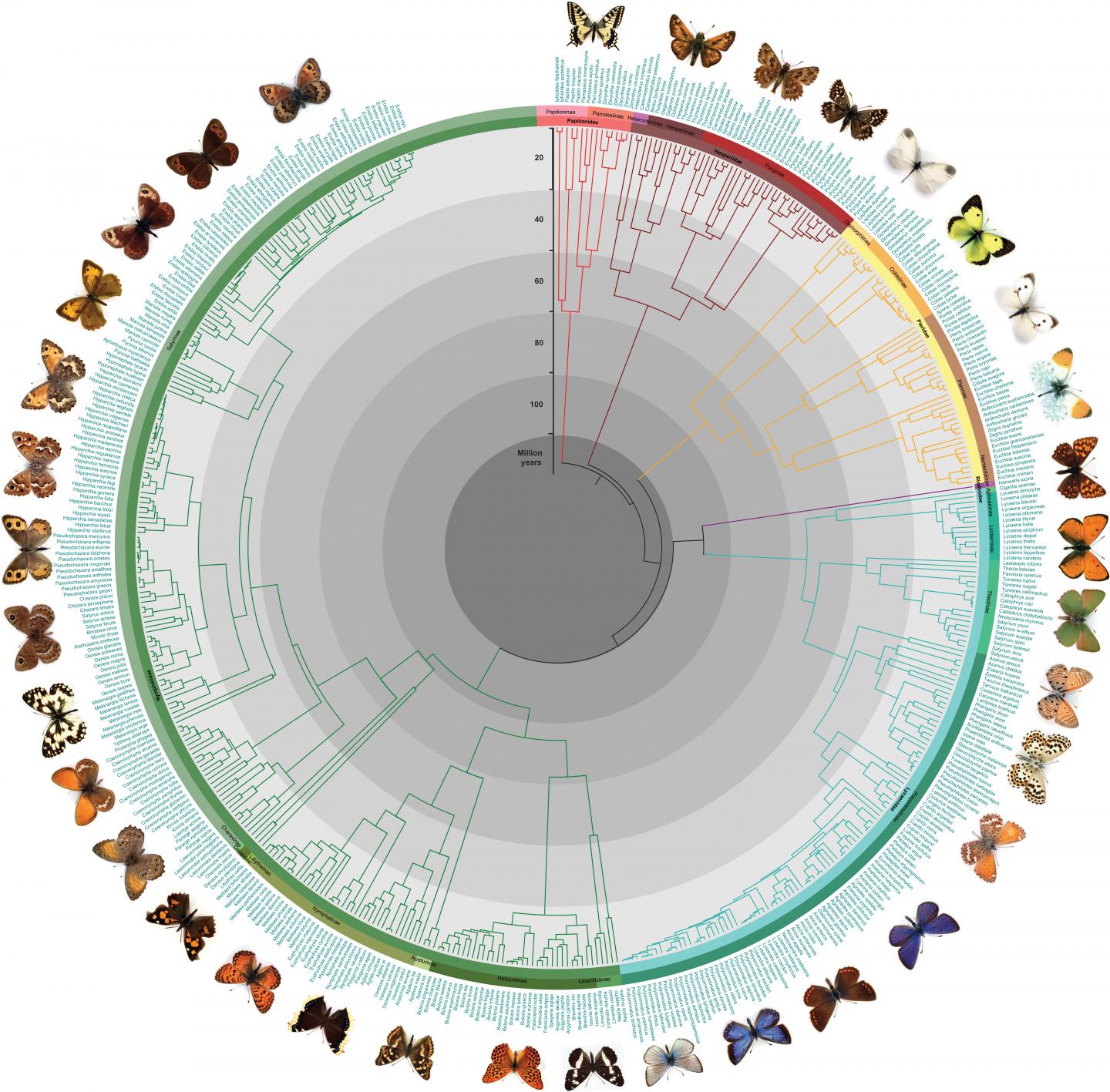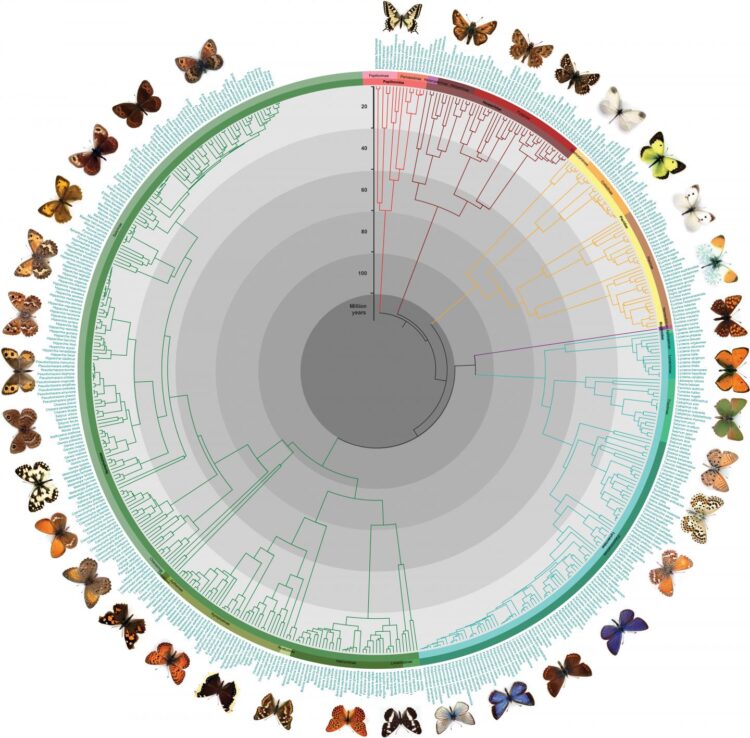
Credit: Dr Martin Wiemers
For the first time, a complete time-calibrated phylogeny for a large group of invertebrates is published for an entire continent.
In a recent research paper in the open-access, peer-reviewed academic journal ZooKeys, a German-Swedish team of scientists provide a diagrammatic hypothesis of the relationships and evolutionary history for all 496 European species of butterflies currently in existence. Their study provides an important tool for evolutionary and ecological research, meant for the use of insect and ecosystem conservation.
In order to analyse the ancestral relationships and history of evolutionary divergence of all European butterflies currently inhabiting the Old continent, the team led by Martin Wiemers – affiliated with both the Senckenberg German Entomological Institute and the Helmholtz Centre for Environmental Research – UFZ, mainly used molecular data from already published sources available from NCBI GenBank, but also contributed many new sequences, some from very local endemics for which no molecular data had previously been available.
Butterflies, the spectacular members of the superfamily Papilionoidea, are seen as an important proponent for nature conservation, as they present an excellent indicator group of species, meaning they are capable of inferring the environmental conditions of a particular habitat. All in all, if the local populations of butterflies are thriving, so is their habitat.
Furthermore, butterflies are pollinating insects, which are of particular importance for the survival of humans. There is no doubt they have every right to be recognised as a flagship invertebrate group for conservation.
In recent times, there has been a steady increase in the molecular data available for research, however, those would have been only used for studies restricted either to a selected subset of species, or to small geographic areas. Even though a complete phylogeny of European butterflies was published in 2019, also co-authored by Wiemers, it was not based on a global backbone phylogeny and, therefore, was also not time-calibrated.
In their paper, Wiemers and his team point out that phylogenies are increasingly used across diverse areas of macroecological research, such as studies on large-scale diversity patterns, disentangling historical and contemporary processes, latitudinal diversity gradients or improving species-area relationships. Therefore, this new phylogeny is supposed to help advance further similar ecological research.
###
Original source:
Wiemers M, Chazot N, Wheat CW, Schweiger O, Wahlberg N (2020) A complete time-calibrated multi-gene phylogeny of the European butterflies. ZooKeys 938: 97-124. https:/
Media Contact
Dr Martin Wiemers
[email protected]
Related Journal Article
http://dx.





